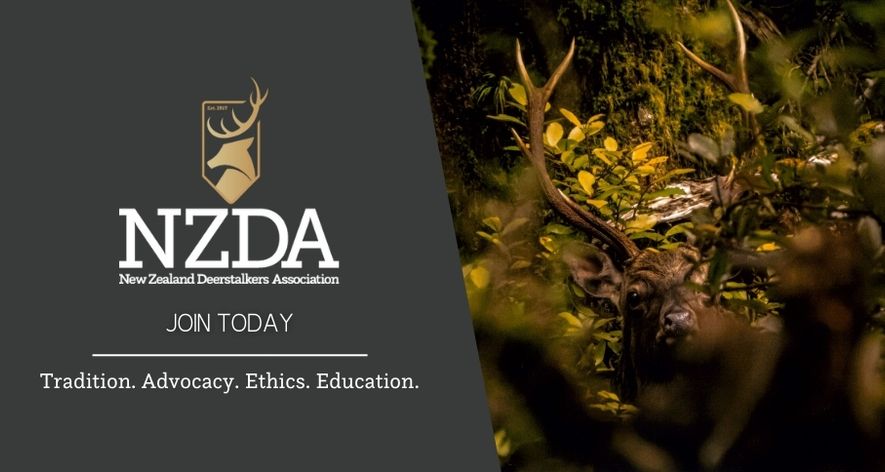Hunting and Wildlife Magazine - Issue 224 - Autumn 2024
Words By: Ministry for Primary Industries (MPI)
While familiar to hunters, surprisingly, not everyone knows New Zealand has wallabies in the wild, the damage they do, or that they are spreading - including ever closer to our much-loved backcountry haunts.
About wallabies in New Zealand
Wallabies were introduced to New Zealand from Australia in the late 1800s mainly for hunting. Bennett’s wallabies were introduced into South Canterbury from Tasmania. At the same time, the smaller dama and parma species were brought into the Rotorua lakes area from Kawau Island, where Sir George Grey had several species in a private zoo.
Wallabies are nocturnal, shy, and elusive. They usually avoid human contact, hiding in scrub or forest margins during the day and coming out at dusk to graze before disappearing again before sunrise. Wallabies don’t have any natural predators here and have adapted so well that they’re now a significant pest, chewing their way through our farms, forests, native bush, and landscapes. Conservatively, it’s estimated that there are more than 1 million pest wallabies in the wild - one wallaby for every five New Zealanders.
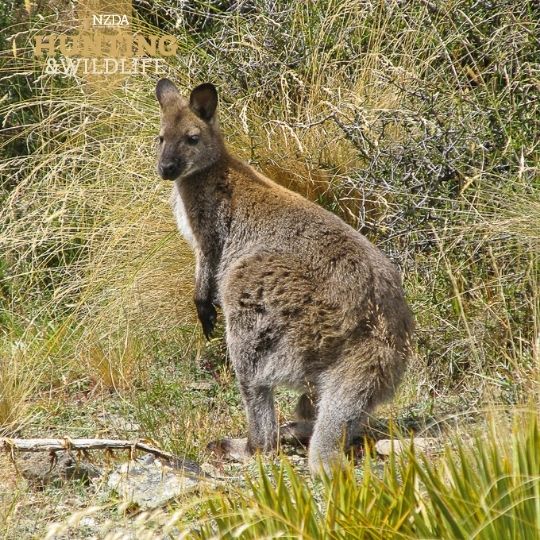
If left unchecked, estimates are that wallabies could spread to over one-third of New Zealand within 50 years,1 costing New Zealanders millions of dollars each year in damage to our productive and natural environments.
As a result, wallabies are an Unwanted Organism under New Zealand’s Biosecurity Act 1993, making it illegal to hold, move, or transport them without specific authorisations. Those who do can face significant penalties, including fines of up to $100,000 and/or prison for up to five years.
Wallabies breed quickly and, with their exceptional ability to pause pregnancies and have a ‘pre-prepared’ embryo available immediately, it is a massive concern that within a short time, the illegal release of a single pregnant female can easily create a new population in a new area.
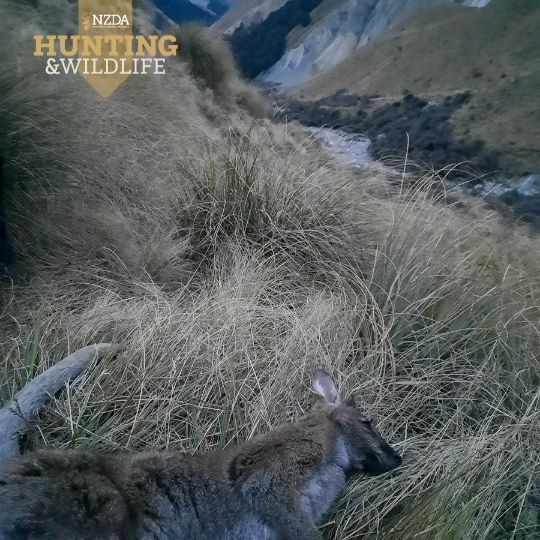
Because wallaby distribution is localised, people believe pest wallabies to be a “local” problem. However, they have been spreading from South Canterbury down to Otago and from the Rotorua Lakes area into other areas of the Bay of Plenty and parts of the Waikato. Without action, what might now be a local problem will soon be a significant national problem like possums and rabbits.
The maps show the predicted spread, including many popular game hunting and recreational areas, by 2065 if nothing is done about the wallabies. Amongst others, parts of the Kaimanawa, Kaweka, and Raukumara ranges in the North Island and the South Island’s Aoraki/Mt Cook, Mt Aspiring, and Mt Somers areas are all under threat.
Pest wallabies are everyone’s problem, and by acting now, we can prevent their damage from becoming as widespread as other introduced pests.
How do wallabies affect our natural environments and enjoyment of them?
Wallabies are herbivores. They prefer to eat young plants, which makes them an environmental threat to New Zealand’s private and public conservation land. Besides grazing and damaging farm pasture and crops, wallabies browse on the seedlings that become our native bush and scrub. Browsing by introduced pests stops seedlings from becoming saplings and, eventually, the mature vegetation that is food and habitat to other species, or the filter for rainfall that helps with water quality and prevents erosion.
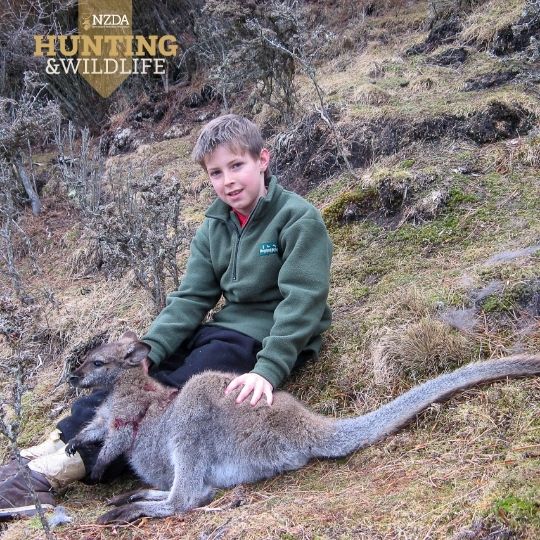
By eating seedlings and killing young trees, wallabies may reduce the uptake of atmospheric carbon as vegetation grows, causing forests to release rather than hold carbon.
In addition to devastation to native flora, wildlife habitat, and food sources, wallabies change the structure and biodiversity of our bush and backcountry environments by lessening the number of plant species. This affects the health of these environments and the wildlife dependent on them. It also impacts our experiences and the restorative effect these environments have on our individual and collective well-being.
Over time, the health, condition, and abundance of wildlife competing with wallabies for food will be compromised. Target hunting species may be pushed further from their usual locations to forage, which might mean hunters must travel further to pursue possibly less healthy animals. Due to their feeding habits and fouling of the ground, wallabies will displace and scatter other species.
What is being done about wallabies?
The Tipu Mātoro National Wallaby Eradication Programme was set up in July 2020 to tackle mainland New Zealand’s dama, parma and Bennett’s pest wallaby problem. As a partnership of Biosecurity New Zealand, iwi and regional councils in wallaby-affected areas, the Department of Conservation (DOC), Federated Farmers, Forest & Bird, Land Information New Zealand (LINZ), farmers, landowners, researchers and communities, its final goal is to eliminate all wallabies from mainland New Zealand.
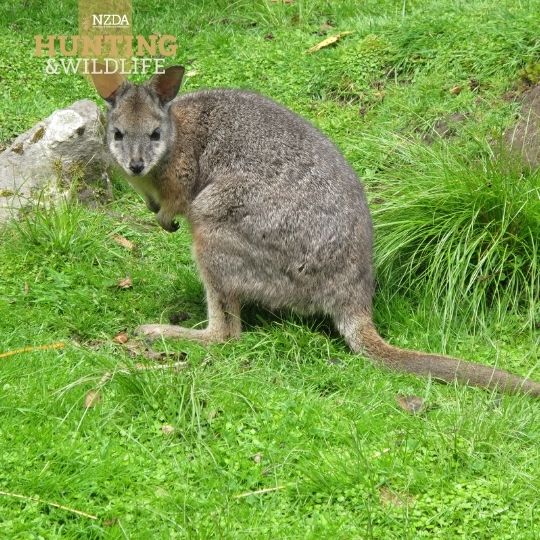
The Tipu Mātoro Aotearoa New Zealand wallaby strategy, which guides the programme, was developed with people affected by wallabies. Its first step is to stop the spread from the Rotorua lakes and South Canterbury areas and reduce wallaby populations over time.
Operationally, this means working from the outside edge of the wallaby populations and reducing the area they cover so that complete elimination becomes possible. That task will take some years and requires everyone to work together in a coordinated and systematic way.
Coordination is key. Sporadically eliminating large numbers of wallabies at the centre of populations may be tempting but must be avoided to prevent wallabies from becoming “control (or gun) shy” and scattering them into new or previously cleared areas.
The programme’s control funding (including on land administered by DOC) goes to regional councils via Biosecurity New Zealand. This maximises efficiencies and benefits by coordinating between neighbours (including iwi, DOC, and LINZ as large landholders) to target wallabies systematically, regardless of who owns the land. Currently, the programme has ongoing Crown funding of $6.9 million per year, with further contributions from regional councils, iwi, and landowners.
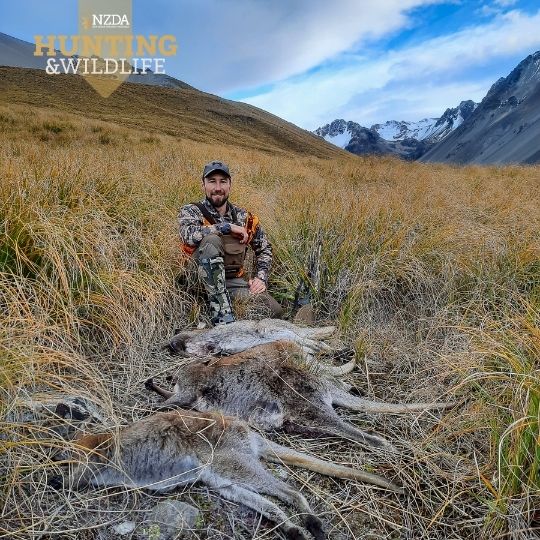
Control work is done by contractors employed by the Bay of Plenty, Waikato, Canterbury, and Otago regional councils. People with an interest in control work should contact the relevant regional council about plans and the council’s contractor requirements.
The bottom line is that if wallabies continue to spread or are helped to spread, control operations will be forced into more locations. Support for the work being done now will lessen the need to control wallabies in popular recreational hunting areas in the future.
Controlling wallabies
The programme constantly balances controlling wallabies as humanely and cost-effectively as possible while weighing recognised concerns about some control methods from various sectors.
Operational activities vary from region to region according to levels of wallaby infestation, terrain, habitat, and location. They include surveillance to identify wallaby populations, control operations (aerial and ground-based shooting and poisoning) and fencing at critical locations to prevent spread.
Better knowledge and tools will be crucial to meeting social expectations and achieving the long-term goal. So, operational research is heavily invested in finding, testing, and improving tools and methods for tackling wallabies while minimising impacts on farming, forestry, and recreational activities.
This research work includes:
- Improving existing and developing new control tools like trialling new wallaby toxins, testing better bait station designs and lures, and using deer repellents.
- Developing more effective ways to detect wallabies by using artificial intelligence for wallaby image recognition, environmental DNA techniques, Unmanned Aerial Vehicles (UAVs), thermal and night vision technologies on the ground and in the air, and GPS-collared wallabies.
- Using isotopes and genetics to better understand where wallabies have come from and how they behave and move across landscapes.
Public reports of sightings, signs, and wallaby kills are critical to determining whether wallabies are where they should be and identifying potential leakage points from which they might spread, including into backcountry areas.
Rolling back wallaby spread will never be cheaper or more feasible than today. Letting wallabies spread invites increased costs and irreparable damage. The number of wallabies killed or the cost per wallaby killed are not valid measures of programme performance since the issue is how many wallabies remain in the wild. The programme’s positive impact can be seen in the increasing distances control teams must cover to find a wallaby.
What can you as hunters do?
The most crucial factor is understanding and supporting the work being done to protect your happy hunting ground from wallabies. Supporting the current work will help keep control teams out of popular recreational areas.
- Tell a mate and get them on board with the wallaby problem and threat to what you love doing. Wallabies also provide another opportunity to introduce hunting to the younger and older generations.
- Report any wallaby signs, sightings or kills you make to reportwallabies.nz
- Encourage others to report. Footprints and droppings are the most common signs.
- Don’t move wallabies around and strongly discourage others from doing this. Wallabies are pests, not pets - this includes joeys (pouch young). While having wallabies nearby may appear a convenient hunting or dog tucker prospect, the actual price is our environment, future hunting opportunities and the hunting community’s reputation. Significant penalties can be imposed on individuals or groups who move wallabies around.
- Check pouches and humanely dispatch joeys. Don’t take them home.
- Keep yourself, your mates, and your dogs safe. If wallaby control signs are up, keep dogs out of the block. Wash your hands thoroughly before eating if you have been handling dead wallabies.
Learn more at mpi.govt.nz/wallabies or sign up for a newsletter wallaby@mpi.govt.nz
Let’s work together to protect our environment and hunting experiences from pest wallabies.
Hunting wallabies
A light calibre weapon with a flat trajectory like a .223 or .243 is ideal for shooting wallabies as light-weighted animals, often shot at medium to long distances.
Spring is a perfect time to hunt wallabies, when they come out of the forest or cover to feed on new grass and shrub growth.
|
Characteristic/behaviour |
Hunting response |
|
Nocturnal and start feeding early to late evening. |
Stake out likely feeding areas from early evening through to darkness. |
|
Fast, elusive movement when disturbed. |
Stake out an area and shoot at stationary animals from an observation point rather than stalking. |
|
Wallaby signs include scratching (around plant roots), tracking, browsed grass or shrubs, footprints, and droppings. |
The presence of fresh signs indicates wallabies nearby. |
|
Wallabies use well-defined tracks to access feeding areas. |
Identify and stake out tracks. |
Hunting on public conservation land. If you have a permit, there are many places to hunt wallabies on public conservation land. To find out more on requirements, permits and finding a hunting block that has wallabies, check out Hunting: Things to do (doc.govt.nz)
Hunting on private land. Landowner permission is required in all cases to hunt on private land, including land held by iwi. Removing shot animals from the property is always a good idea to prevent attracting other pests such as wild cats, stoats, and pigs.
Many NZDA branches across the country organise regular wallaby hunts, talk to your local branch about getting in on a hunt.
Unfortunately, the Tipu Mātoro programme and its partners cannot help match hunters to landowners.
[Sidebar] About wallabies and identifying them.
|
Species |
Dama wallaby Macropus eugenii |
Parma wallaby Macropus parma |
Bennett’s wallaby Macropus rufogriseus |
|
Size |
Up to 50cm tall; 4–7kg |
Up to 45cm tall; 3–6kg |
Up to 80cm tall; 14–20kg |
|
Colour |
Brownish grey (more like a rabbit); paler underbelly |
Greyish brown (more like a hare); white throat and chest |
Grey-brown; pale chest and belly; reddish shoulders |
|
Social behaviour |
Forms small groups |
Normally solitary |
Solitary |
|
Sexual maturity |
Females: 12 months Males: 24 months
|
Females: 12 months Males: 24 months |
Females: 14–-20 months Males: 21–22 months
|
|
Gestation & in-pouch period |
28 days Pouch ~ 250 days |
35 days Pouch ~ 220 days |
30 days Pouch ~270 days |
|
Birthing |
Peak season January – February |
Anytime, most births February – July |
Anytime, most births February – March |
|
Life expectancy in the wild |
8–10 years on average |
6-8 years on average |
9–12 years on average |
Footnotes
- Manaaki Whenua Landcare Research 2016 Report. Review of current and future predicted distributions & impacts of Bennett’s and dama wallabies in mainland New Zealand, MPI, March 2016
Electronic or print copies
Members receive an electronic version by email but printed copies can be ordered (for a print and postage fee) which will be delivered to your home.
To order printed copies visit our NZDA Shop at www.nzda.shop
Read Previous Editions Online
Read the historic editions online for free now. Browse here.
Write for Hunting and Wildlife



